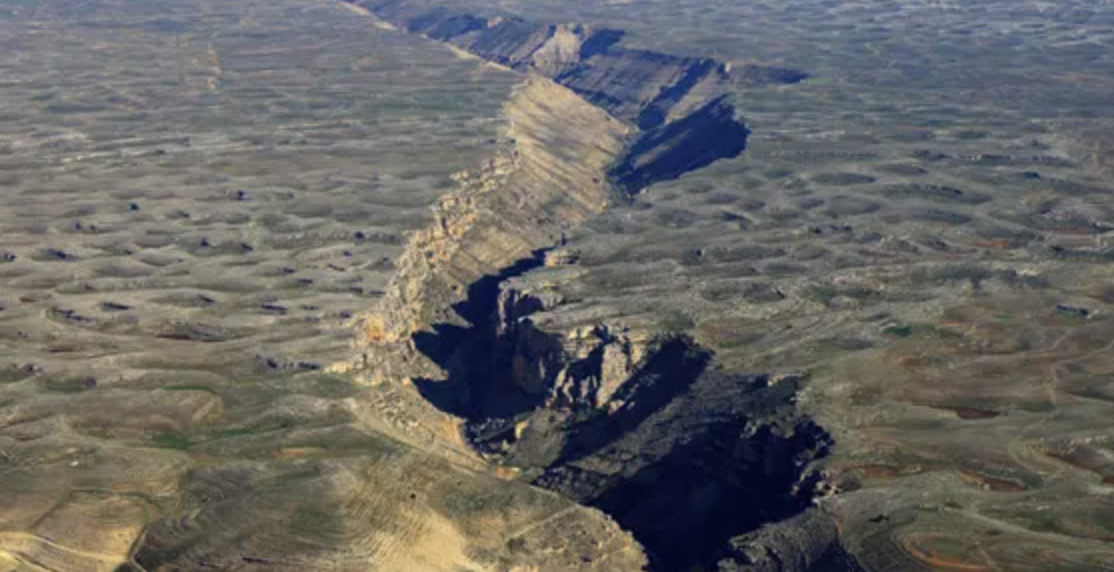A major geological event is splitting India apart
Recent scientific discoveries suggest a hidden geological shift could greatly change the landscape and raise the risk of earthquakes in the region.

This theory suggests that a portion of the Indian Plate is “delaminating” as it slides beneath the Eurasian Plate. (CREDIT: CC BY-SA 4.0)
Deep beneath the mountains of the Himalayas, something remarkable is taking place. The vast, rocky plate supporting India, known as the Indian Plate, is slowly breaking apart. Recent scientific discoveries suggest this hidden geological shift could greatly change the landscape and raise the risk of earthquakes in the region.
Scientists have long known that the towering Himalayan mountains formed about 60 million years ago. The mountains rose when the Indian Plate crashed into the Eurasian Plate. This massive collision forced rock upwards, creating the world's highest peaks. Yet, the new findings reveal something unexpected: the Indian Plate is not just colliding—it's tearing apart deep underground.
Understanding the Unexpected Tear
Researchers studying seismic waves—energy waves created by earthquakes—noticed unusual patterns beneath Tibet. They also found surprising gases bubbling up from springs. These clues pointed toward a process called delamination. Delamination happens when a plate’s dense lower section peels away and sinks deeper into Earth's hot mantle.
Douwe van Hinsbergen, a geodynamicist from Utrecht University, described the discovery as groundbreaking: “We didn’t know continents could behave this way, and that is, for solid earth science, pretty fundamental.”
Previously, scientists believed continents mostly stayed intact, sliding or pushing against each other. Now, this new evidence from the American Geophysical Union conference indicates that Earth's plates are more dynamic and unpredictable than we imagined.
Increased Earthquake Risks in the Region
This geological tearing isn't just a fascinating scientific event—it could significantly impact earthquake safety in the Himalayan region. According to Simon Klemperer, a geophysicist at Stanford University, the deep fractures created by delamination might increase stress in Earth's crust. That could mean stronger and more frequent earthquakes, especially in Tibet, already known for intense seismic activity.
Related Stories
The Cona-Sangri Rift, a large fracture on the Tibetan Plateau, may also be closely linked to this underground activity. As the Indian Plate continues to tear apart beneath, stress shifts to different areas, possibly triggering major earthquakes at the surface.
Caution Needed: Science Still Unfolding
While scientists are excited by these discoveries, caution is still necessary. Fabio Capitanio, a geodynamicist at Monash University, emphasizes that the current data represents just a small part of a complex picture. “It’s just a snapshot,” Capitanio noted. More research and data are required to understand fully how this delamination process might evolve.
Scientists will continue studying seismic waves and chemical signatures to monitor the Indian Plate’s future behavior. Understanding this phenomenon will help better predict earthquake risks and develop safety measures for people living in these high-risk areas.
Global Significance of a Cracking Plate
The Indian Plate’s unusual behavior has wide-reaching implications for geological studies globally. It shows that continents can behave unpredictably, challenging old assumptions about tectonic movements. This discovery prompts scientists to reconsider how other mountain ranges worldwide might have formed.
Researchers now want to find similar examples of delamination in other continents. Understanding this process could reshape how we view mountain-building events everywhere, from the Rockies to the Andes.
Peter DeCelles, a geologist at the University of Arizona, compares the ancient Indian Plate to a manta ray. It had thick continental crust in the center and thin oceanic crust on the sides. During collision, thinner sections quickly slipped beneath the Eurasian Plate, while the thicker middle crashed head-on, forming mountains. These variations likely set the stage for the tearing happening today.
Evidence from Springs and Earthquakes
To unravel this mystery, Klemperer and his team examined helium gas bubbling from Tibetan springs. They measured helium-3, a rare gas indicating mantle rocks deep within Earth. Springs south of a particular line showed helium from crustal rocks. Those north revealed mantle gas, marking the boundary of the intact Indian Plate sliding beneath Tibet.
Yet, a group of springs south of this line, near Bhutan, oddly showed mantle helium. This suggested a tear allowing deep mantle rocks to rise toward the surface.
The team also used earthquake wave patterns, which confirmed this suspicion. They saw evidence of the lower plate breaking off from its upper section. Another earthquake wave study identified a clear vertical tear along the plate’s western edge. To the east of this tear, the sinking slab separated, allowing mantle rock to flow upward.
Uncovering Earth’s Complex History
Anne Meltzer, a seismologist at Lehigh University, highlights the importance of these findings. She notes that nearly every continent has been shaped by similar collisions. Understanding India's situation can help explain geological features worldwide. These ancient collisions have created landscapes we know today and affected where earthquakes occur.
Klemperer further suggests the tear beneath Tibet might actively affect earthquake risk today. The Cona-Sangri Rift directly overlies this fracture, indicating a possible connection between underground shifts and surface quakes.
While direct proof remains uncertain, these connections underline the importance of continuing research into these complex geological events. Van Hinsbergen agrees, noting plate tears and delamination may significantly impact earthquake likelihood.
These findings remind us that Earth is constantly changing, driven by powerful hidden forces. Each discovery brings us closer to understanding the intricate processes shaping our world, impacting millions of people living in these dynamic regions.
Note: Materials provided above by The Brighter Side of News. Content may be edited for style and length.
Like these kind of feel good stories? Get The Brighter Side of News' newsletter.
Joseph Shavit
Head Science News Writer | Communicating Innovation & Discovery
Based in Los Angeles, Joseph Shavit is an accomplished science journalist, head science news writer and co-founder at The Brighter Side of News, where he translates cutting-edge discoveries into compelling stories for a broad audience. With a strong background spanning science, business, product management, media leadership, and entrepreneurship, Joseph brings a unique perspective to science communication. His expertise allows him to uncover the intersection of technological advancements and market potential, shedding light on how groundbreaking research evolves into transformative products and industries.



